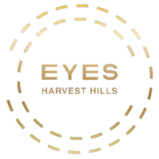Myopia—also known as nearsightedness—is a common eye condition that causes blurry vision and difficulty seeing things clearly at a distance. Often beginning to progress around the age children enter school, myopia affects millions of Canadians but can be diagnosed by an optometrist.
Fortunately, myopia can be diagnosed during a comprehensive eye exam and treated with the help of corrective aids like Stellest lenses.
Stellest lenses, using unique technology, target the root causes of myopia. They defocus peripheral vision while maintaining central clarity, slowing down myopia progression and its effects.
What Is Myopia?
Myopia, better known as nearsightedness, is a common progressive eye condition caused by the eyeball growing too long or the cornea becoming too curved. When your eye is shaped properly, it refracts light through the clear front part to reach a central point directly on your retina. This is then sent through the optic nerve to the brain, where it’s processed as visual information.
However, these light rays don’t focus on the retina when the eye is too long. They reach a point just in front of it, leading to light rays scattering onto the retina, causing blurry vision when focusing on distant objects.
Myopia affects every person differently, but some common symptoms include:
- Blurry vision
- Headaches
- Eye strain
- Eye fatigue
- Difficulty seeing objects clearly at a distance
Fortunately, this condition is common enough that many treatment options are available for myopia control.
How Is Myopia Treated?
Traditionally, myopia is treated using corrective eyeglasses or contact lenses. These alter how light enters and refracts into your eye so it can reach a focal point on your retina. However, while these can help counteract the blurry vision myopia causes, they can’t always slow how the condition progresses.
This has led to research and development focusing on slowing—or stopping—how the eye elongates, aiming to stop myopia from progressing and avoiding long-term effects on a person’s sight. While researchers haven’t found a way to stop myopia completely, there are products designed to slow the condition’s progresses—like Stellest lenses.
Stellest Lenses for Myopia
Stellest lenses offer a revolutionary approach to managing myopia in children. Developed by experienced scientists working closely with optometrists, these lenses can address the underlying causes of myopia—while still providing clear vision.
These lenses force your eyes into a state called “peripheral defocus.” This technique redirects light rays away from the peripheral section of the retina while still providing clear central vision.
This approach aims to slow how the eye progresses by manipulating how light enters the eyes. Since the eye is responding to the light it’s receiving, Stellest lenses use peripheral defocus to slow the elongation of the eyeball.
The Benefits of Stellest Lenses
Stellest lenses are an excellent way to help treat myopia in children and can provide several benefits, including:
- Controlling how myopia progresses
- Offering clear vision for children. This can be particularly beneficial for school, as most of a child’s learning is vision-based.
- A comfortable, effective alternative to traditional eyeglasses or contact lenses.
Many of these glasses also incorporate UV protection, which can help prevent UV rays from causing damage to your child’s eyes.
Getting Help for Myopia
Even though myopia is a common condition, it can be managed and controlled by the help of an optometrist. During a comprehensive eye exam, your eye doctor can determine your visual needs and suggest a form of myopia control—like using Stellest lenses. Schedule an appointment with us here at Eyes on 34th, and get your child the help they need for their myopia!




